
How often is it that a train coming through town is a reason for a family reunion? That was the case for the Thomson family.
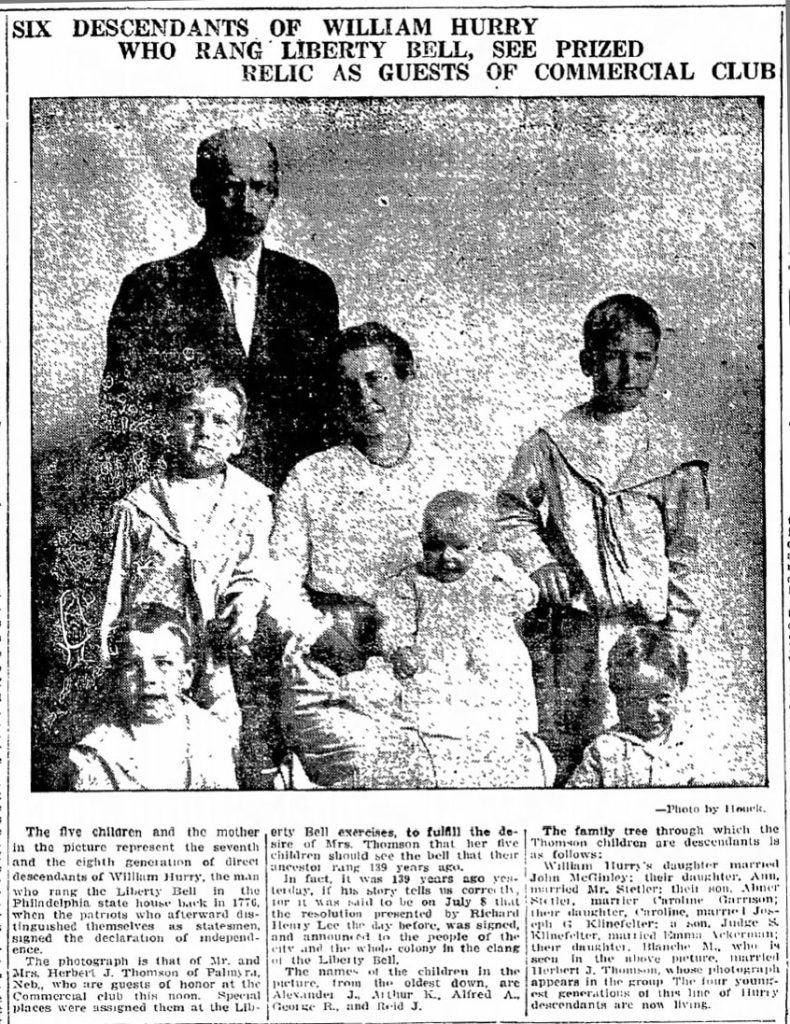
1915 Liberty Bell Tour
Trains played a big part in the history of the Thomson family, as Blanche Thomson, a city girl from Pittsburgh, Pennsylvania had met her future husband Herbert Thomson on a train platform in Colorado Springs, Colorado in 1905.
So, it seemed appropriate that the family would visit any trains that related to their family. The first significant visit to a train was in 1915.
The Request
Blanche (Klinefelter) Thomson, Rod’s great-grandmother, heard that the Liberty Bell was going to be loaded on a train for travel across the county to an exposition in San Francisco. She was very interested in this happening. She had seen the famous bell when she visited Philadelphia as a child and it remained a special memory. Moreover, she heard that it was going to make a stop in Lincoln, Nebraska, a few miles from their home near Palmyra. So, she did what any descendant of the most famous bell ringer in the country would do when the most famous bell in the country came to town. She put in a request for her family to attend the festivities.
Blanche wrote to the Lincoln Commercial Club asking if they could reserve seats for her family. She explained her connection to the Liberty Bell and said that “[S]he wanted her children to see the world-famous emblem, this sacred relic which their direct ancestor had rung.”
William Hurrie Lineage
Blanche and family’s viewing of the Liberty Bell was nearly 140 years in the making. It all started on July 8,1776 when Andrew NcNair was away from his role as doorkeeper to Congress for the day. William Hurrie, who would later hold that position, substituted for Andrew. And, it was on that day that Congress asked for the people of Philadelphia to be called together to hear the first official public reading of the Declaration of Independence.
William Hurrie rang the Liberty Bell to notify people of the reading and the rest is history. Read more about William Hurrie, the doorkeeper. Read about WIlliam Hurrie’s family.
Guests of Honor
As a result of Blanche’s request, Blanche, her husband Herbert Thomson, and their children were guests of honor at the Commercial Club Luncheon. The date of the event in Lincoln was 139 years and 1 day after Blanche’s ancestor rang the 2080 pound bell declaring independence.
They were guest of the president of the Commercial Club and were also greeted by the mayor and the secretary of the Commercial Club. After the luncheon, the family was taken to the site of the Liberty Bell program and were seated on the platform where speeches were given.
The Program
Security was tight with National Guard and police in charge, but that didn’t stop people from pushing past others for their chance to see the famous bell. The time allotted in Lincoln simply could not accommodate everyone who wanted an up-close view. However, the number of people that got within a half-a-block from the bell and who were considered close enough to get a glimpse of it, range from 25,000 to 40,000.
The program that day was cut a bit short mostly because people simply could not hear over the crowd. Of course, it was also 88 degrees and several people fainted or had heat-related issues. No one was afforded the opportunity to hear the sound of the bell. However, it had been rung the previous February to proclaim liberty throughout the land. This time it wasn’t just heard in Philadelphia, instead, the tones of the bell were sent over the transcontinental telephone line, which had just been completed. As the bell was struck with a mallet, the sound of the bell was heard in San Francisco. It was also recorded. Note: In 1944, they rang the Liberty Bell again for D-Day. It rang out seven times – once for each letter in the word “Liberty.”
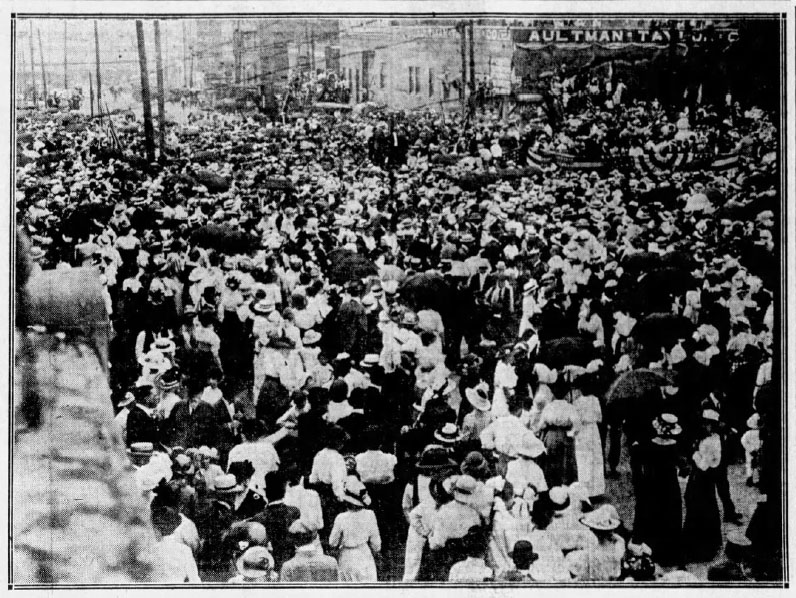
Liberty Bell 1915
Liberty Bell 2003

Photo taken in Philadelphia, Pennsylvania during our visit in 2003.
1948 Freedom Train Tour
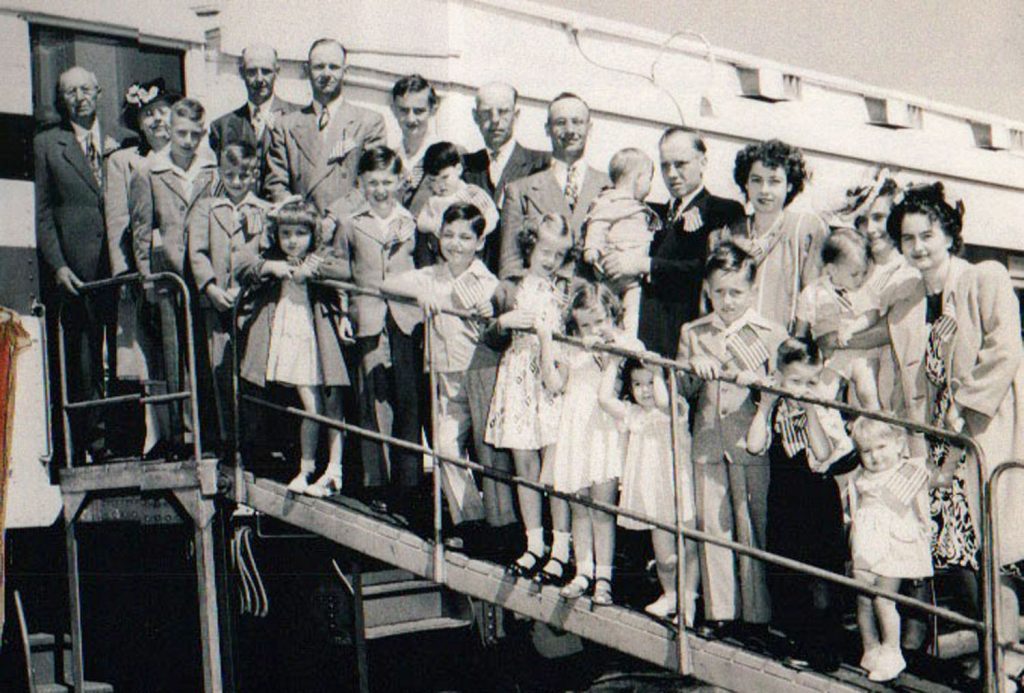
Having been honored guests when the Liberty Bell had come to town in 1915, many people were aware that the Thomson family had a connection to the days of the American Revolution. So, when in 1948 the Freedom Train put Lincoln, Nebraska on their list of scheduled stops, it only seemed fitting that the Thomson family again be honored guests. However, Blanche and Herbert’s children were now grown with families of their own. Thus, it an opportunity for a family reunion.
Why An Exhibit
In 1948, the Attorney General of the United States “became concerned with the complacency of the American people, their lack of appreciation of the freedoms that have been won for them during the last 160 years…” Thus, an exhibit traveling by rail called the Freedom Train was born. It was to travel to 300 cities across the nation.
The train consisted of seven cars. Three held exhibits, one was for baggage and equipment, and the other three were for the crew. Thirty or forty men traveled on the train, with a significant majority of them being Marines that guarded the train 24 hours a day/7 days of the week.
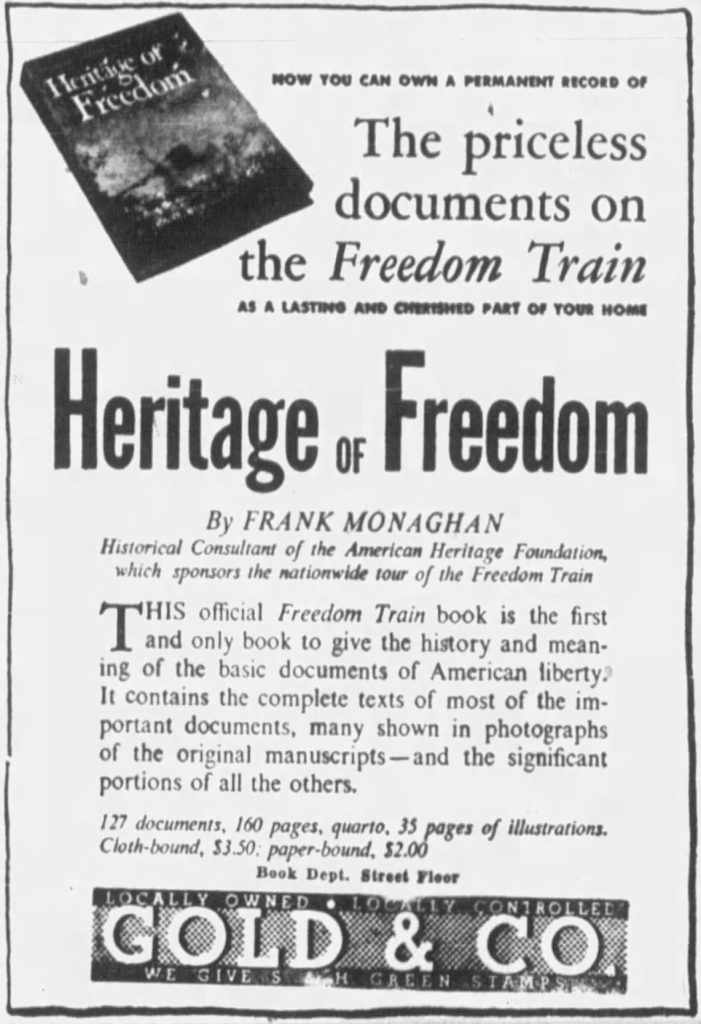
The Museum
The Freedom Train was a “moving symbol of America’s year of rededication to the ideals and practices of democracy.” This train carried 127 exhibits including many documents of American’s heritage: such as,
- The Declaration of Independence (Jefferson’s rough draft with changes marked on it)
- The Constitution (George Washington’s personal copy of the draft of Constitution with his corrections marked on it)
- The Bill of rights (original copy)
- The Gettsburg Address (actual copy he read when he gave the address)
- A letter Christopher Columbus wrote about discovery of America
- WWI & WWII documents
- A flag that flew at Iwo Jima
To protect the precious artifacts, the train and everything on it was fireproof with the exception of the artifacts themselves. To ensure that the documents remained safe, they were put in envelopes that were waterproof, fireproof, and shatterproof. Then they were placed in steel cases with multiple layers of glass that protected them from damage from light.
Rededication Week
Each city held its own activities focused on rededication to the principals on which this country was founded. They held Rededication Week in the days leading up to the arrival of the Freedom Train at their location. The goal was to remind everyone of the value of their heritage and their own responsibility in preserving those freedoms.
Daily Theme
In Lincoln, Nebraska each day had a specific focus with rallies, speeches, music, and other events planned around the specific topic. The focus areas were:
- Sunday – Freedom of Religion
- Monday – American Justice
- Tuesday – Veterans
- Wednesday – Women
- Thursday – Labor and Industry
- Friday – Schools (Including both teachers and students)
- Saturday – Municipal
- Sunday – I am an American Day. Dedicated to those 21 and over that had been naturalized within the previous year.
The Pledge
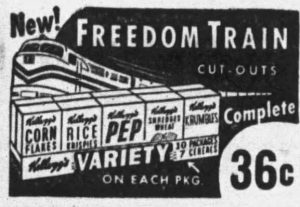
During the weeks leading up to the arrival of the Freedom Train and for some time after, films were shown at clubs, organizations, etc. about the documents and history of the founding of the country. There also were radio programs on the subject. Additionally, the newspaper ran articles, not only about the event, but also focused on some of the key documents aboard the Freedom Train. During the week, people were also encouraged to take the following pledge:
I am an American.
Free to speak – without fear.
Free to worship God in my own way.
Free to stand for what I think right.
Free to oppose what I believe wrong.
Free to choose those who govern my country.
This heritage of freedom I pledge to uphold.
For myself and all mankind
After the week of rededication, the red, white, and blue Freedom Train was to be parked at the Missouri Pacific railroad station on Sunday. The public could view the document from 10 a.m. to 10 p.m., but could only accommodate approximately 10,000 people. Therefore, it was recommended that families only bring children age twelve and up as the documents would not be meaningful to youngsters and both time and space for viewing the exhibit were limited.
Viewing The Exhibit
Special Showing
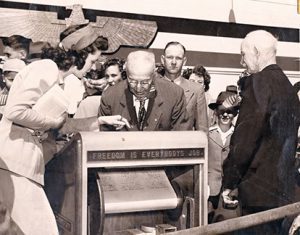
A special showing between 9 a.m. and 10 a.m. before the doors opened to the public was held for by-invitation-only guests. Most of the guests were city, county, and state officials, and the press. However there were a few special guests. Among them were Blanche, her father Judge Sharpless Klinefelter, and 24 of her descendants. The only other guest with the distinction of having a connection to the documents on the train was a woman whose grandfather worked on the original draft of the 14th Amendment.
As the family exited the exhibit, they were invited to sign the rededication scroll.
The chairman in charge of the train said, “A family rich in American tradition as this one, certainly deserves a little special treatment.” It was mentioned by someone present, however, that a history researcher claimed that Andrew McNair was the bellringer who called together the citizens of Philadelphia to hear the first public reading of the Declaration of Independence. To which, Judge scoffed and replied, “Andrew McNair, eh? Hump!” Following the viewing of the exhibits on the Freedom Train, Judge and his descendants enjoyed a picnic dinner at Antelope Park.
The General Public
At 10 a.m. the public started boarding the train. The first ones on had been in line since 5:45 a.m. The line varied from two to three blocks in length. However, with every Lincoln police office on duty and the fire department assisting, the crowd remained orderly.
High school bands played to entertain the people waiting. Meanwhile veteran groups sold refreshments. However, no peddlers or others who followed the train were allowed to sell their wares as it was considered a serious subject and the people organizing the events did not want a circus environment.
By the end of the day, 8,241 people would board the train and view the exhibits. And, a half-hour after the last person exited the exhibit, the train was on its way to its next destination.

One More Freedom Train
The Bicentennial brought about another Freedom Train. It was bigger. Since it stayed longer at many locations, the train traveled in both 1975 and 1976. This time, they charged admission ($2 for adults, $1 for children) to defray costs.
The Thomson family didn’t hold a big reunion for the Bicentennial Freedom Train. This is likely because Judge and Blanche, who seemed to be the biggest voices for the family’s history in Philadelphia, had all died prior to this date. Still, when the train came through Omaha, my husband’s mother took him and his siblings to see the Freedom Train.
To learn more about this Freedom Train check out The Story of the 1975-1976 American Freedom Train and The American Freedom Train Comes to Pittsburgh.
Featured Image: Source: St. Louis Star-Times, St. Louis, Missouri , June11, 1948 via newspapers.com
Prompt: Reunion
#52ancestors52weeks

